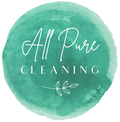Become a Label Reader: 7 Cleaning Chemicals to Avoid

Today there is a growing movement towards health and wellbeing. Safer, eco-friendly and healthier lifestyle choices are becoming more available. People are becoming more conscious of the effects of their choices on their health and the health of the planet and as a result more “green” and “eco-friendly” products are becoming available. But with them are coming those looking to capitalise on the trend. What’s known as “Green Washing” takes advantage of peoples’ desire for eco-friendly options, without actually providing them. Phrases such as “100% Recyclable”, “Environmentally Friendly”, “Earth Smart”, “Biodegradable”, “Eco-Friendly” and “Natural”. These phrases are actually meaningless. They do not hold the manufacturer to any kind of industry standard and are superficially “green” enough to give the appearance of being an environmentally friendly and less toxic choice. Terra Choice’s article The Six Sins of Greenwashing does a good job discussing how to identify false marketing claims.
To avoid being swayed by misleading marketing strategies and branding, the best bet is to look out for which chemicals to avoid in household products. We speak about the negative effects of chemicals in our article Why Chemical Free Cleaning? ranging from mild skin, eye and airway irritation, to chronic and debilitating conditions such as cancer, reproductive, developmental and behavioural disorders and neurological impairment.
So if you want to make your house free of chemicals that put you and your family at risk, here is a list of chemicals to watch for and avoid.
1. Ammonia
FOUND IN: window cleaners, drain cleaners, toilet cleaners, bathroom cleaners, oven cleaners, stainless-steel cleaners, car polish, and all-purpose cleaners.
Ammonia fumes are an irritant to the eyes, skin, throat and airways. People with asthma or respiratory conditions are more susceptible to the effects of inhaling ammonia. It has also been linked to damage to the kidneys and liver and is highly volatile when mixed with other common cleaning chemicals such as those containing chlorine bleach (sodium hypochlorite) forming chloramine gas, a highly poisonous compound.
2. 2-Butoxyethanol
FOUND IN: glass cleaners, laundry stain removers, carpet cleaners, automobile cleaners, windshield wiper fluid, degreasers, oven cleaners, and rust removers.
2-Butoxyethanol (2-BE) is an irritant to the skin and eyes and has also been shown to be associated with reproductive problems and blood disorders in laboratory studies. The Environmental Protection Agency classes 2-BE as a neurotoxin and possible carcinogen. Exposure can cause central nervous system depression, nausea, vomiting, diarrhoea and headaches. This ingredient is common in products that seem healthy as they contain fruit-based fragrances such as “green”, “citrus”, “lemon” or “orange”.
3. Fragrance Chemicals (Phthalates)
FOUND IN: most cleaning products
Thousands of chemicals are used to fragrance cleaning products. As fragrances are often considered a trade secret they are not required to be listed on product packaging. Despite this, many can trigger allergies, migraines and asthma symptoms. Phthalates used in fragrances have been shown to be endocrine disruptors, associated with reproductive problems including decreased sperm count in men. They are also associated with hormonal abnormalities, thyroid disorders and birth defects. In addition, phthalates build up in the environment and are very toxic to marine life.
4. Phosphates
FOUND IN: dishwasher detergents, laundry detergents, and bathroom cleaners.
Phosphates are present in high doses in fertilizers and have the same effect when washed down the sink and into the waterways. They cause an explosion of growth in plant life, which then consumes all of the oxygen in the water and chokes the other organisms, which start to die. Algae then develops and prospers in this environment. Algal blooms have ruined several popular recreation areas in Australia and can poison humans and animals.
5. MEA (Monoethanalomine), DEA (Diethanolamine), TEA (Triethanolamine)
FOUND IN: liquid laundry detergents, all-purpose cleaners, floor cleaners, car wash products, degreasers, dishes soap, oven cleaners, and glass and surface cleaners.
MEA is a highly corrosive agent, and can even cause bleeding to the exposed area in concentrated form. Inhalation can cause damage to the lungs and airways. MEA is a neurotoxin, carcinogen, and through repeated exposure can damage the liver and kidneys.
6. Sodium Lauryl Sulphate (SLS) and Sodium Laureth Sulphate (SLES)
FOUND IN: dish soap, liquid laundry detergents, cleaning towelettes, and toilet bowl cleaners (as well as sudsy cosmetics).
Sodium lauryl sulphate (SLS) is a skin and eye irritant and may be toxic to the environment. It is a corrosive agent and will accumulate in body tissues after prolonged use. Sodium laureth sulphate is the “ethoxylated” form of this chemical, which is less harsh. However, the process of producing it creates carcinogenic pollutants.
7. Triclosan
FOUND IN: dish soaps and disinfectants, as well as a wide range of other household products. Look for it listed as an “active ingredient” in antibacterial products.
Triclosan is an anti-microbial agent and there is concern that such products are responsible for the development of strains of antibiotic-resistant bacteria, making bacterial infections less responsive to treatments. Triclosan is a toxic substance and endocrine disrupter that interferes with human hormones. It is irritating to the skin and eyes, and toxic to aquatic organisms, causing pollution after long-term pollution in waterways. Some agencies are calling for a ban on antibacterial consumer products.

Leave a comment